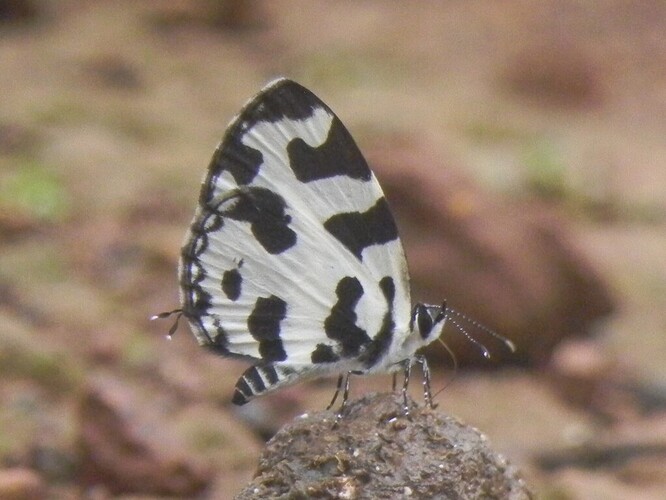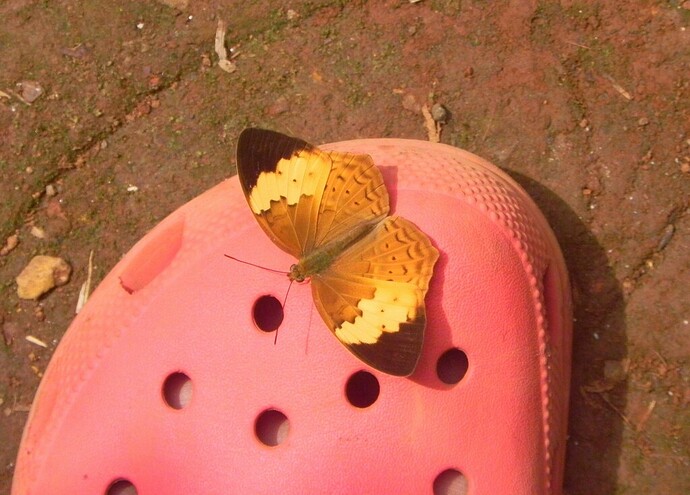I frequent urban area’s frequently, so open parks, sidewalks, railway tracks, building sites and wastelands are oftentimes where I’ve picked up on some very different plants. Unfortunately, these are the exact area’s where humanity’s unchecked zeal for mess shows up most. That being said, I’m sometimes see something, bend down in some weird posture to photograph it and then pick up that there is are things in the background that do not belong there.
It so happened that two days ago I was bending down almost nose to the pavement and bum in the air (I call this the small plant iNat pose) to take an image of goatfoot sorrel, when my eye caught the background rubbish - a used condom…Aargh - in the parking area of a sportsground!?
Lucky for me there were plenty other specimens which could be submitted without being tacky in the extreme. Not so lucky was to bend down again in a somewhat less unsavoury spot.
My other pose (the sopping dew cold wet sock squelch pose) was ruined by a dog t**d hiding behind a paterson’s curse this morning, grrr - people an their dogs just do not realise the effort needed to get to your socks wet on a cold winter morning.
This makes me wonder - is it actually OK not to waste that hard to make pose and take the image anyway, rubbish in the background be damned? (And I do sometimes pick up rubbish to dispose of it, but I do not always want to get my hands filthy in pursuit of a photo of what is 90% sure to be an invasive weed)
I think we appreciate your effort – I like my photos to be pleasing and uncluttered, too – but I don’t think it’s a requirement. There’s a way where the background trash is a good indication of the urban environment the organism is surviving in.
(Also, condolences on the wet winter socks!)
I’m a firm believer in “Show it as it is”.
Sometimes that means dog turds, sometimes that means condoms, sometimes that means roadkill, sometimes that means endangered species clinging to a felled old growth tree, sometimes that means maggots erupting from the specimen. Hiding the mess would hide its struggle.
I would just do what you find most satisfying in this case. If it’s worth it to you to contort or get your socks wet, go for it. If not, no problem with posting pics with trash, waste, etc. in the background on iNat. The only thing I would note is that, if an IDer might be confused about the target of the observation do to distracting trash, you could leave a note in the description or a comment.
Like you I prefer a clean photo of the subject (and relevant surrounds) without the background mess, i’ve also place my hands / knees in some unsavoury things in the pursuit of a good photo
For me, the cigarette butts and battled bottle caps can be an element of style and habitat description, almost like an artistic exaggeration in what kind of environments these amazing plants and animals can survive
Wherever possible, I personally try to frame images without trash (or my shoe, or passers-by, or footpath signage, or whatever) in the background.
On the one hand, it may be marginally better for computer vision training reasons to keep the number of miscellaneous elements in the image to a minimum. On the other hand, iNat is about showing the world how it is, and if certain plants/animals are thriving despite being surrounded by trash then then is a valid and important observation about the habitat in itself, so I can see that there might be value to including a second photo that includes some of the contextual pollution.
But actually the main reason I prefer to keep my images ‘clean’ is that I never know if I might someday want to use the shot for another purpose. I’ve made several observations that years later turned out to be a rare or new species, or special in some other way, and people have asked if they can use my photo in a scientific paper or field guide or other publication. It would be a pity if a request like that were to come through in the future and all you had to offer was a shot of the creature perched on a discarded Coke can, or the plant growing out from under a sun-bleached Kit-Kat wrapper.
I don’t stress about having human stuff- rubbish, asphalt roads etc. in a photograph, but for some weird reason I hate having my own shadow in the picture. I have missed a few shots of birds and animals because I was moving about trying to eliminate my shadow.
If you like projects, there’s one for observations with trash:
https://www.inaturalist.org/projects/bitter-about-litter
Here’s a Angled Pierrot sitting on chicken poop, but it was a new lifer and I could absolutely not ignore it. Also the chicken poop had the nutrients the Pierrot wanted.
Well, considering that most plants must not be photographed from above I have had many times to kneel down up to completely lie down on the ground to take some decent photos. The same when I had to collect seeds. This happened in meadows full of ticks as well as in urban areas with people passing beside me and watching perplexed what I was doing.
Rubbish and poos are part of the environment in which organisms thrive. So, maybe the photo would not result the most memorable one, but, at least you photopraphed that damn organism!
Generally photos of small animals look the best artistically if the camera is at eye level with the animal, since it makes for a more relatable image than looking down at them from human eye height. The result is that bird photographers trying to capture shorebirds often end up laying down in the mud trying to get the perfect angle. They can get incredible photos that way but you wouldn’t think it from their pose!
Or my shadow.
You, too? And the funny thing is that I feel this was about my shadow, but not the rest of me; in this Swollen Bladderwort observation, my leg is in the picture because of how close I was standing, whereas if I had tried to remove it, I would have ended up leaning in such a way that my shadow would intrude.
We want see the real leg not the shadow
This little butterfly came fluttering right on my extremely bright red floater.

